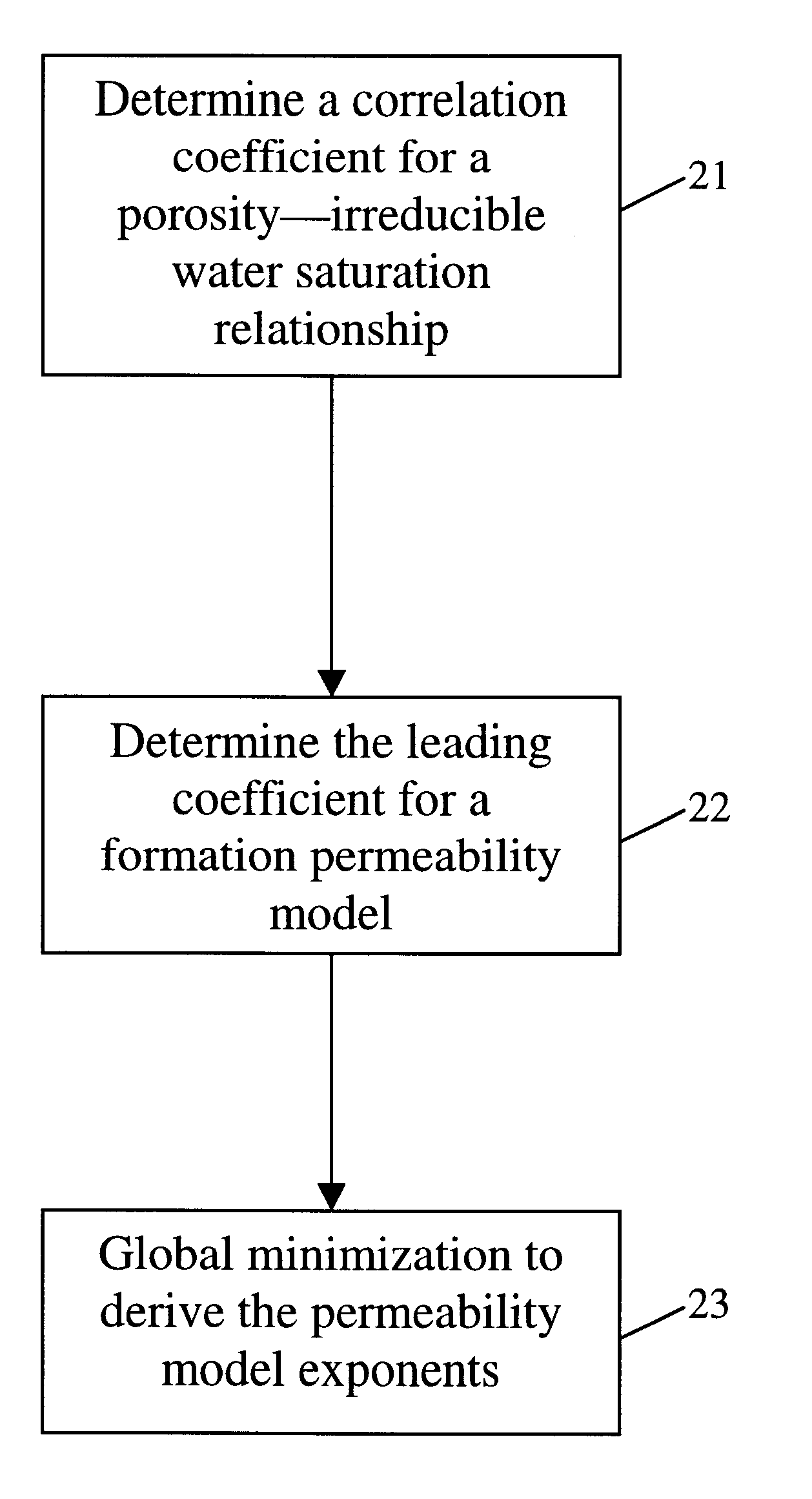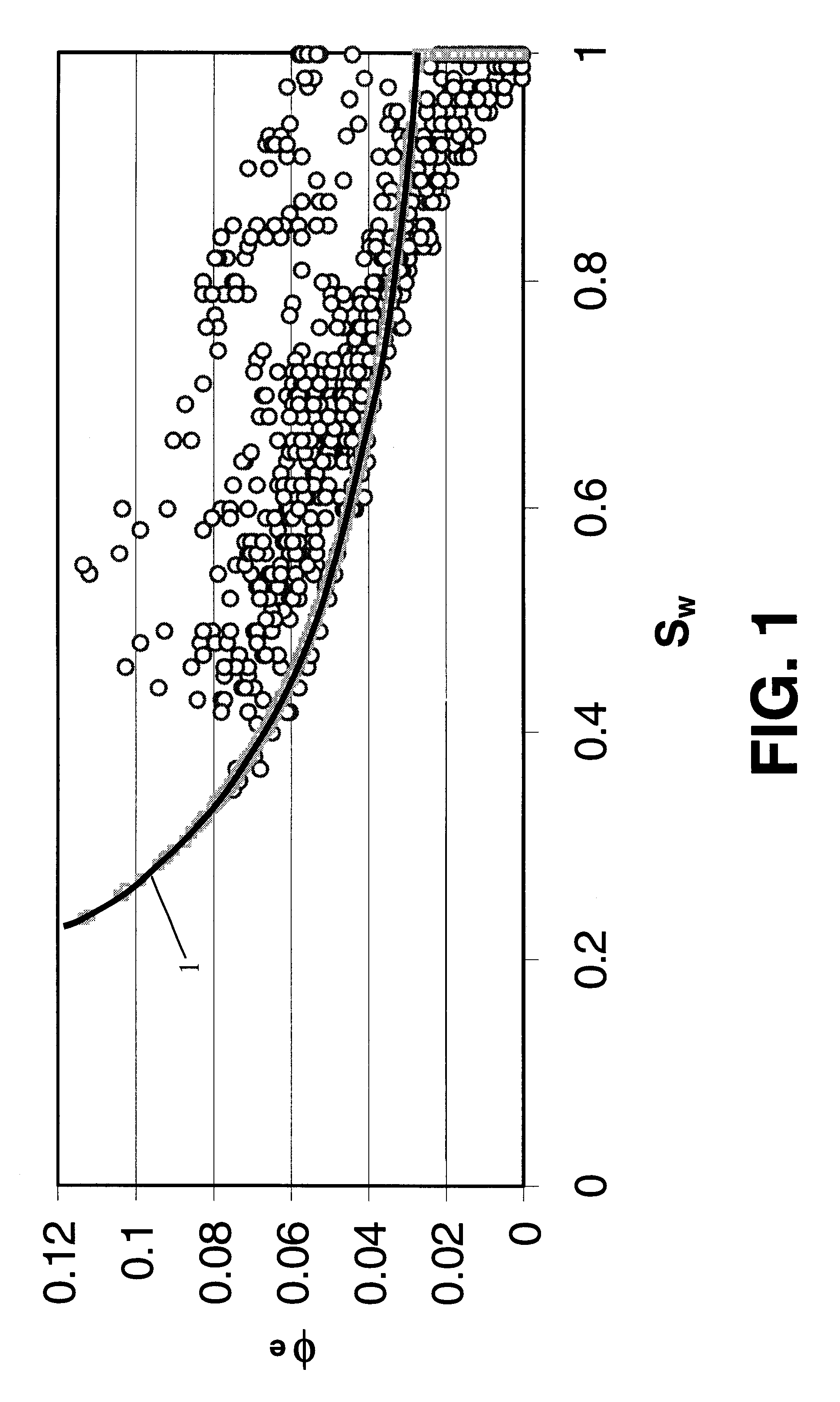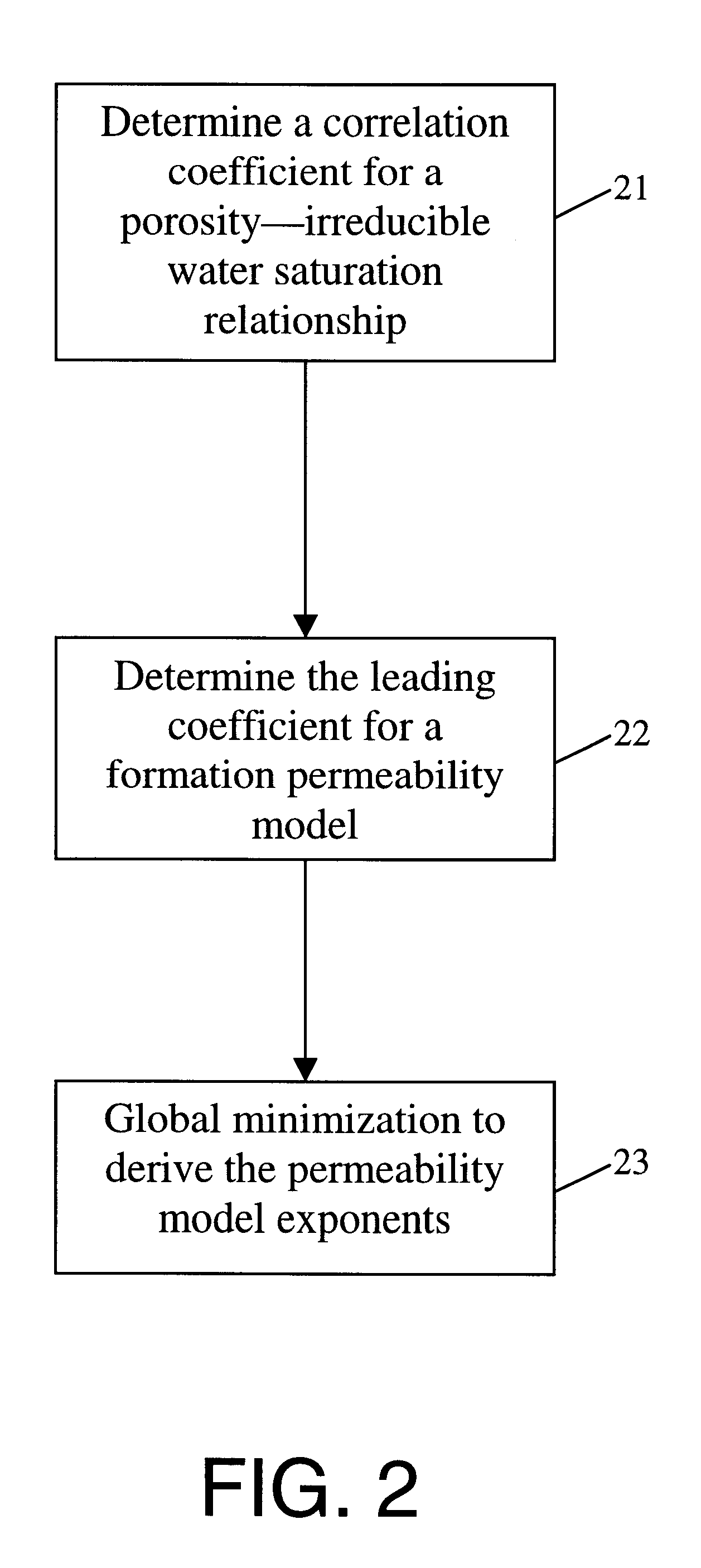Log permeability model calibration using reservoir fluid flow measurements
a reservoir fluid and permeability technology, applied in the field of well logging, can solve the problems of inability to accurately predict the permeability of the reservoir, the most difficult to determine or predict the permeability (or fluid conductivity), and the correlation is not always tru
- Summary
- Abstract
- Description
- Claims
- Application Information
AI Technical Summary
Benefits of technology
Problems solved by technology
Method used
Image
Examples
Embodiment Construction
FIG. 3 (Well No. 1) shows results obtained with one embodiment of the invention. Production logs were run after all zones were put on production and the results are displayed in the last 2 tracks of the log. Using the production logs and production performance analysis the permeability of the rock associated with each fracture stage was determined and is shown as the shaded area of track 8 on the log (PERMzone). The coefficients for the Coates permeability equation were then calculated.
The inputs for the calculation were the average effective formation permeability to gas for each of the fracture stages (derived from a well production performance analysis), the formation net pay thickness of each fracture stage interval used in the production performance analysis, and the water saturation, total porosity, and effective porosity values determined from the well log analysis. For this example, the B parameter value used in the analysis was the average of all of the zones, and all zones...
PUM
 Login to View More
Login to View More Abstract
Description
Claims
Application Information
 Login to View More
Login to View More - R&D
- Intellectual Property
- Life Sciences
- Materials
- Tech Scout
- Unparalleled Data Quality
- Higher Quality Content
- 60% Fewer Hallucinations
Browse by: Latest US Patents, China's latest patents, Technical Efficacy Thesaurus, Application Domain, Technology Topic, Popular Technical Reports.
© 2025 PatSnap. All rights reserved.Legal|Privacy policy|Modern Slavery Act Transparency Statement|Sitemap|About US| Contact US: help@patsnap.com



